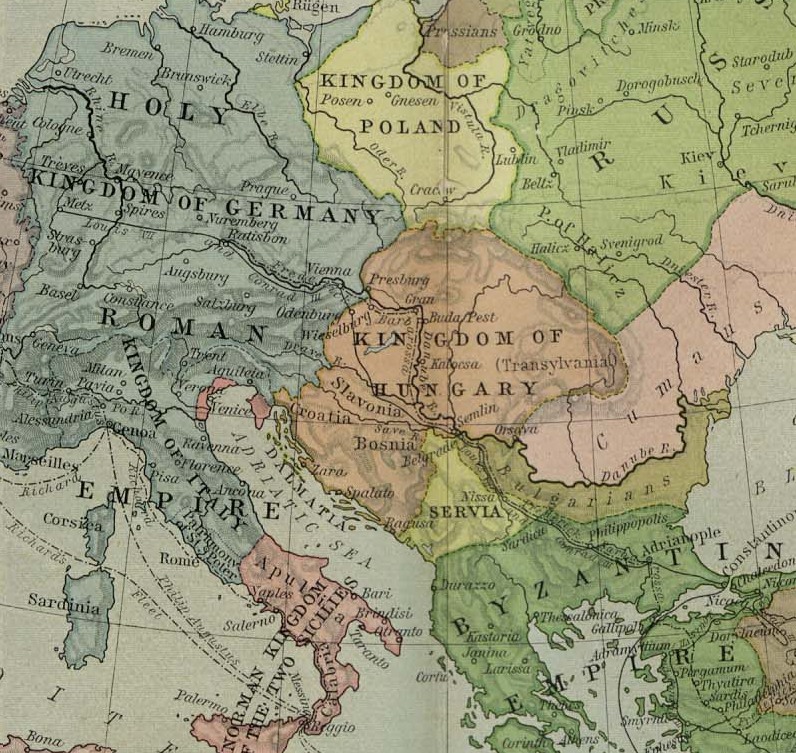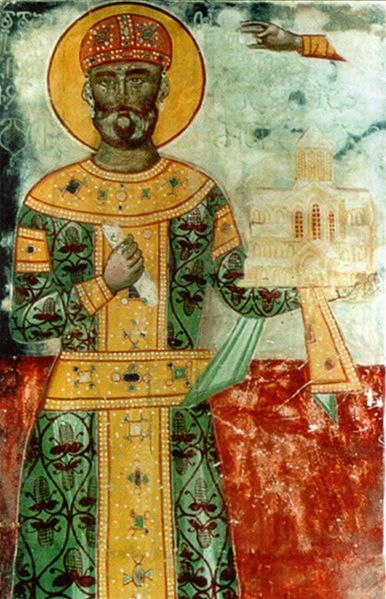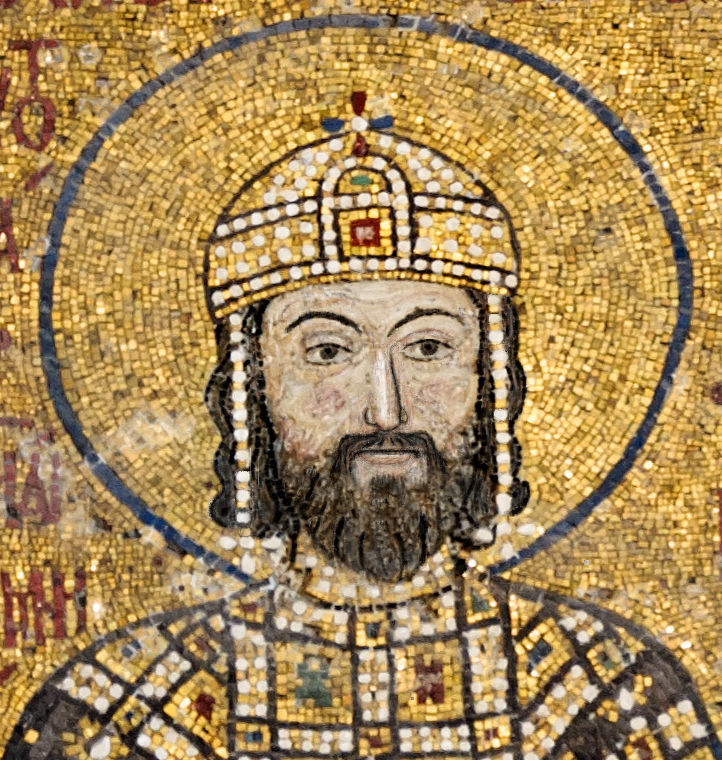|
Kata Of Georgia
Kata or Katay ( ka, კატა, კატაჲ) was a daughter of David IV, King of Georgia. She was married off by her father into the Byzantine imperial family 1116, but the identity of her husband is not revealed in the medieval sources. There are three modern hypotheses regarding her marriage.Lynda Garland & Stephen Rapp. ''Mary 'of Alania': Woman and Empress Between Two Worlds'', p. 121. In: Lynda Garland (ed., 2006), ''Byzantine Women: Varieties of Experience, 800-1200''. Ashgate Publishing, Ltd., . Marriage Medieval chronicle Kata's marriage is mentioned by the 12th-century ''History of the King of Kings David'', part of the compiled Georgian Chronicles, which does not specify the name of her husband. The chronicle extols Kata and her sister, Tamar, a wife of the shah of Shirvan, as luminaries of the West and the East, respectively, reflecting the splendor of their father.Prinke, Rafał T. (2011), "Kata of Georgia", ''Foundations'' 3 (6): 489-502. Modern theories There ... [...More Info...] [...Related Items...] OR: [Wikipedia] [Google] [Baidu] |
David IV Of Georgia
David IV, also known as David the Builder ( ka, დავით აღმაშენებელი, ') (1073–1125), of the Bagrationi dynasty, was the 5th king of United Georgia from 1089 until his death in 1125. Popularly considered to be the greatest and most successful Georgian ruler in history and an original architect of the Georgian Golden Age, he succeeded in driving the Seljuk Turks out of the country, winning the Battle of Didgori in 1121. His reforms of the army and administration enabled him to reunite the country and bring most of the lands of the Caucasus under Georgia's control. A friend of the church and a notable promoter of Christian culture, he was canonized by the Georgian Orthodox Church. Sobriquet and regnal ordinal The epithet ''aghmashenebeli'' (), which is translated as "the Builder" (in the sense of "built completely"), "the Rebuilder", or "the Restorer", first appears as the sobriquet of David in the charter issued in the name of "King of Kings Bagr ... [...More Info...] [...Related Items...] OR: [Wikipedia] [Google] [Baidu] |
Volodar Of Peremyshl
Volodar Rostyslavych, ''Volodar Rostislavich'' () (died 1124) was Prince of Zvenyhorod (1085–92) and Peremyshl' (1092–97). He actively was involved in the Polish internal affairs. Volodar also waged a war against the Grand Prince of Kiev Sviatopolk II of Kiev and his son Yaroslav. In 1121 Volodar was imprisoned in Poland, but was bonded out by his brother Vasylko Rostyslavych. Together with Vasylko participated at the federal council in Liubech in 1097 (see Council of Liubech). His father was Rostislav of Tmutarakan; his son was Volodymyrko of Halych, father of Yaroslav Osmomysl. Today there is confusion between two localities of former Zvenyhorod city, one being located in Lviv Raion in Lviv Oblast and another in Chortkiv Raion in Ternopil Oblast. The map on the left shows one east of Halych (pol. ''Halicz''), which is one in the Ternopil Oblast, while the official Ukrainian historiography claims the one near Lviv, which would be located north of Halych. Military c ... [...More Info...] [...Related Items...] OR: [Wikipedia] [Google] [Baidu] |
George II Of Georgia
:''There was also a List of heads of the Georgian Orthodox Church, Giorgi II, Catholicos of Kartli who ruled in 826–838.'' George II ( ka, გიორგი II, ''Giorgi II'') ( 1054 – 1112), of the Bagrationi Dynasty, was a king of Kingdom of Georgia, Georgia from 1072 to 1089. He was a son and successor of Bagrat IV of Georgia, Bagrat IV and his wife Borena of Alania. Unable to deal effectively with the constant Seljuk Turks, Seljuk Turkish attacks and overwhelmed by internal problems in his kingdom, George was forced to abdicate in favor of his energetic son David IV of Georgia, David IV, to whom he remained a nominal co-ruler until his death in 1112. He also held the high Byzantine Empire, Byzantine titles of ''curopalates'' (c. 1060) and ''caesar (title), caesar'' (c. 1081). Early reign George’s childhood coincided with the civil war between his father, Bagrat IV (r. 1027–1072), and the rebellious Georgian feudal lord Liparit IV, Duke of Kldekari, Liparit, who succe ... [...More Info...] [...Related Items...] OR: [Wikipedia] [Google] [Baidu] |
Family Of David IV Of Georgia
The family of David IV the Builder ( ka, დავით IV აღმაშენებელი), King of Georgia ( r. 1089–1125), was part of the Bagrationi dynasty. The dynasty had made their appearance in the Georgian lands in the 8th century and succeeded in unifying several native polities into a unified kingdom by 1008. David IV concluded this process of unification, setting stage for a Georgian domination in the Caucasus. Like his Bagratid ancestors, David entertained claims of descent from the biblical king David. He was a direct descendant of the first Georgian Bagratid monarch Ashot I (died 826/830) and bore known lineage, among others, from the Abkhazian, Alanian, Artsruni, Bagratuni, and Guaramid dynasties. David's immediate family consisted of his two successive wives and several children, of whom four are relatively better documented. Parents and parental relations According to the ''Life of King of Kings David'' (ცხორებაჲ მეფეთ-მე ... [...More Info...] [...Related Items...] OR: [Wikipedia] [Google] [Baidu] |
Simon Franklin
Simon Franklin is Professor of Slavonic Studies at the University of Cambridge, UK. He is a Fellow of Clare College. In 2007 he was awarded the Lomonosov Gold Medal by the Russian Academy of Sciences for outstanding achievements in research in Russian history and culture. Selected bibliography * ''Sermons and Rhetoric of Kievan Rus'' (Harvard University Press, 1991) * (with Jonathan Shepard) ''The Emergence of Rus, 750-1200'' (Longman, 1996) * ''Byzantium - Rus - Russia: Studies in the Translation of Christian Culture'' Ashgate, 2002 * ''National Identity in Russian Culture. An Introduction'' (ed. with Emma Widdis) Cambridge University Press Cambridge University Press is the university press of the University of Cambridge. Granted letters patent by King Henry VIII in 1534, it is the oldest university press in the world. It is also the King's Printer. Cambridge University Pre ..., 2004 * ''Writing, Society and Culture in Early Rus, c. 950-1300'' (Cambridge University P ... [...More Info...] [...Related Items...] OR: [Wikipedia] [Google] [Baidu] |
Alexander Kazhdan
Alexander Petrovich Kazhdan (russian: Алекса́ндр Петро́вич Кажда́н; 3 September 1922 – 29 May 1997) was a Soviet-American Byzantinist. Among his publications was the three-volume ''Oxford Dictionary of Byzantium'', a comprehensive encyclopedic work containing over than 5,000 entries. Early life and education Born in Moscow, Kazhdan was educated at the Pedagogical Institute of Ufa and the University of Moscow, where he studied with the historian of medieval England, Evgenii Kosminskii.Bryer, Anthony.Obituary: Alexander Kazhdan" ''The Independent''. 5 June 1997. Retrieved August 28, 2010. A post-war Soviet initiative to revive Russian-language Byzantine studies led Kazhdan to write a dissertation on the agrarian history of the late Byzantine empire (published in 1952 as ''Agrarnye otnosheniya v Vizantii XIII-XIV vv.'') Despite a growing reputation in his field, anti-Semitic prejudice in the Joseph Stalin-era Soviet academy forced Kazhdan to accept a series ... [...More Info...] [...Related Items...] OR: [Wikipedia] [Google] [Baidu] |
Constantinople
la, Constantinopolis ota, قسطنطينيه , alternate_name = Byzantion (earlier Greek name), Nova Roma ("New Rome"), Miklagard/Miklagarth (Old Norse), Tsargrad ( Slavic), Qustantiniya (Arabic), Basileuousa ("Queen of Cities"), Megalopolis ("the Great City"), Πόλις ("the City"), Kostantiniyye or Konstantinopolis ( Turkish) , image = Byzantine Constantinople-en.png , alt = , caption = Map of Constantinople in the Byzantine period, corresponding to the modern-day Fatih district of Istanbul , map_type = Istanbul#Turkey Marmara#Turkey , map_alt = A map of Byzantine Istanbul. , map_size = 275 , map_caption = Constantinople was founded on the former site of the Greek colony of Byzantion, which today is known as Istanbul in Turkey. , coordinates = , location = Fatih, İstanbul, Turkey , region = Marmara Region , type = Imperial city , part_of = , length = , width ... [...More Info...] [...Related Items...] OR: [Wikipedia] [Google] [Baidu] |
Kingdom Of Abkhazia
The Kingdom of Abkhazia ( ka, აფხაზთა სამეფო, tr; lit. "Kingdom of the Abkhazians"), also known as Abasgia or Egrisi-Abkhazia, was a Middle Ages, medieval feudalism, feudal state in the Caucasus which was established in the 780s. Through dynastic succession, it Unification of the Georgian realm, was united in 1008 with the Kingdom of the Iberians, forming the Kingdom of Georgia. Byzantine Empire, Byzantine sources record that in the early years of the 10th century Abkhazia stretched three hundred Ancient Greece, Greek miles along the Black Sea coast, from the frontiers of the ''Theme (Byzantine district), thema'' of Chaldia to the mouth of the river Nicopsis, with the Greater Caucasus, Caucasus behind it. History Background Abkhazia, or Abasgoi, Abasgia of classic sources, was a Principality, princedom under Byzantine Empire, Byzantine authority. It lay chiefly along the Black Sea coast in what is now the northwestern part of the modern-day Georgi ... [...More Info...] [...Related Items...] OR: [Wikipedia] [Google] [Baidu] |
Joannes Zonaras
Joannes or John Zonaras ( grc-gre, Ἰωάννης Ζωναρᾶς ; 1070 – 1140) was a Byzantine Greek historian, chronicler and theologian who lived in Constantinople (modern-day Istanbul, Turkey). Under Emperor Alexios I Komnenos he held the offices of head justice and private secretary ('' protasēkrētis'') to the emperor, but after Alexios' death, he retired to the monastery on the Island of Hagia Glykeria, (İncir Adası, in the Bay of Tuzla), where he spent the rest of his life writing books. Life Almost nothing is known of Zonaras's life. However, various elements can be inferred from his own writings. In one of his writings he states that he "saw" the second marriage of an emperor. This could have only been the marriage of Nikephoros III with Maria of Alania in late 1078. It's not known with certainty if Zonaras served under John II Komnenos (r. 1118–1143), although this is still a possibility. Zonaras' ''Epitome'' served as the basis of Constantine Manasses' ... [...More Info...] [...Related Items...] OR: [Wikipedia] [Google] [Baidu] |
John II Komnenos
John II Komnenos or Comnenus ( gr, Ἱωάννης ὁ Κομνηνός, Iōannēs ho Komnēnos; 13 September 1087 – 8 April 1143) was Byzantine emperor from 1118 to 1143. Also known as "John the Beautiful" or "John the Good" (), he was the eldest son of Emperor Alexios I Komnenos and Irene Doukaina and the second emperor to rule during the Komnenian restoration of the Byzantine Empire. As he was born to a reigning emperor, he had the status of a . John was a pious and dedicated monarch who was determined to undo the damage his empire had suffered following the Battle of Manzikert, half a century earlier. John has been assessed as the greatest of the Komnenian emperors. In the course of the quarter-century of his reign, John made alliances with the Holy Roman Empire in the west, decisively defeated the Pechenegs, Hungarians and Serbs in the Balkans, and personally led numerous campaigns against the Turks in Asia Minor. John's campaigns fundamentally changed th ... [...More Info...] [...Related Items...] OR: [Wikipedia] [Google] [Baidu] |
Alexios Komnenos (co-emperor)
Alexios Komnenos, latinised as Alexius Comnenus ( el, ; October 1106 – summer 1142), and sometimes called Alexios the Younger, was the eldest son of the Byzantine emperor John II Komnenos and his wife Eirene of Hungary. He was crowned co-emperor in 1119, at 13 of age, but predeceased his father in 1142. He was an elder brother of the emperor Manuel I Komnenos, and had a twin sister, Maria Komnene (plus other siblings). Life Alexios was born at Balabista (today Sidirokastro) in Macedonia (Greece). His exact birthday is not recorded, but it was shortly before the feast of Demetrius of Thessaloniki on 26 October 1106. He was crowned co-emperor by his father in 1119, between 12 July and 7 October (historians often date his coronation to 1122, but this is a mistake). He died of a sudden disease in the summer 1142, only one year before his father's death as the result of a hunting accident. The reign of John II is less well chronicled than those of his father, Alexios I, or ... [...More Info...] [...Related Items...] OR: [Wikipedia] [Google] [Baidu] |
Anna Komnena
Anna Komnene ( gr, Ἄννα Κομνηνή, Ánna Komnēnḗ; 1 December 1083 – 1153), commonly Latinized as Anna Comnena, was a Byzantine princess and author of the ''Alexiad'', an account of the reign of her father, the Byzantine emperor, Alexios I Komnenos. The ''Alexiad'' is the most important primary source of Byzantine history of the late 11th and early 12th centuries. Although she is best known as the author of the ''Alexiad'', Anna played an important part in the politics of the time and attempted to depose her brother, John II Komnenos, as emperor and seize the throne herself.Hanawalt 1982, p. 303. At birth, Anna was betrothed to Constantine Doukas,Hanawalt 1982, p. 303. and she grew up in his mother's household.Neville 2016, p. 2. She was well-educated in "Greek literature and history, philosophy, theology, mathematics, and medicine." Anna and Constantine were next in the line to throne until Anna's younger brother, John II Komnenos, became the heir in 1092. Constan ... [...More Info...] [...Related Items...] OR: [Wikipedia] [Google] [Baidu] |




.jpg)
.jpg)

